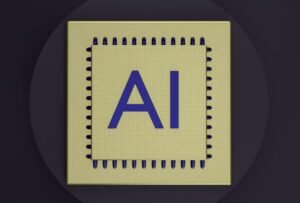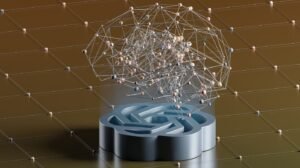List of OpenAI Products
OpenAI is an artificial intelligence research laboratory known for developing cutting-edge products. In this article, we will explore some of the impressive products offered by OpenAI.
Key Takeaways:
- OpenAI offers a range of AI products for various applications.
- Their products are designed to improve productivity and enhance decision-making processes.
- OpenAI focuses on innovation and stays at the forefront of AI technology.
1. GPT-3: The Language Model Revolution
GPT-3, short for Generative Pre-trained Transformer 3, is a language model developed by OpenAI that has revolutionized natural language processing. With 175 billion parameters, GPT-3 can generate human-like text and perform a wide range of language-based tasks. Its versatility has made it highly sought after by developers and businesses alike.
GPT-3’s applications range from chatbots to content generation, making it incredibly valuable.
2. OpenAI Gym: Harnessing AI for Reinforcement Learning
OpenAI Gym provides a toolkit for developing and comparing reinforcement learning algorithms. It offers a wide variety of pre-built environments and tools that enable researchers and developers to experiment and train AI models effectively. OpenAI Gym is an essential resource for those interested in advancing the field of reinforcement learning.
OpenAI Gym empowers developers to build intelligent systems that can learn and improve on their own.
3. OpenAI Codex: Explosive Development with AI Assistance
OpenAI Codex is an AI-powered code generation tool. By leveraging GPT-3’s language capabilities, OpenAI Codex can provide developers with relevant code suggestions, assist with bug fixes, and even generate entire functions or programs. This significantly speeds up the development process and enhances productivity.
OpenAI Codex is a game-changer, enabling programmers to write code more efficiently than ever before.
| Product | Key Features |
|---|---|
| GPT-3 |
|
| OpenAI Gym |
|
| OpenAI Codex |
|
4. OpenAI DALL-E: The Artistic AI
DALL-E is an AI model developed by OpenAI that generates high-quality images from textual descriptions. It can create remarkable visuals from simple instructions, which makes it a valuable tool in various creative applications. Artists and designers can harness DALL-E’s capabilities to bring their ideas to life.
DALL-E merges language and imagery, allowing for the creation of breathtaking visuals.
5. OpenAI ChatGPT: Interactive Conversations Made Easy
OpenAI’s ChatGPT enables interactive and dynamic conversations with AI models. It is trained to provide useful responses in a chat-based format, allowing users to have engaging and informative exchanges. ChatGPT can be integrated into various platforms, enhancing customer support experiences and creating AI-driven chatbot interactions.
ChatGPT sparks interactive conversations, making AI more accessible and interactive.
| Product | Applications |
|---|---|
| DALL-E |
|
| ChatGPT |
|
6. OpenAI RoboSumo: AI Takes On the Ring
RoboSumo is a research environment for training simulated robots in physics-based competitions. It provides a platform for AI researchers to develop and test algorithms for robot control in a fun and engaging way. RoboSumo fosters innovation in the field of robotics and facilitates the creation of intelligent machines.
RoboSumo brings AI and robotics together, fueling the development of advanced control algorithms.
7. OpenAI Solitaire: Reinventing Classic Games
Solitaire is OpenAI’s take on the classic card game. In this project, OpenAI trained models to play Solitaire using reinforcement learning. It demonstrates how AI techniques can be applied to traditional games, opening up new possibilities for improving game strategies and enhancing player experiences.
OpenAI’s Solitaire showcases the potential of AI in the realm of recreational activities and game development.
8. OpenAI RoboSumo: Reinventing Chess
Chess is another classic game that OpenAI has delved into. Using reinforcement learning, OpenAI trained a model to play Chess at a high level. This project showcases the impressive capabilities of AI in mastering complex strategic games and exploring new approaches to gameplay.
OpenAI revolutionizes Chess with AI-powered gameplay, challenging human players in new and exciting ways.
9. OpenAI API: Powering AI Applications
The OpenAI API provides developers with a powerful tool to integrate various OpenAI models into their own applications. By using the OpenAI API, developers can unlock the potential of AI in their software, enhancing user experiences and introducing advanced capabilities.
With the OpenAI API, developers can tap into the vast capabilities of OpenAI models to enhance their own applications.
10. OpenAI LP: Language Models for Licensing
OpenAI LP offers licensing for language models, allowing businesses and organizations to utilize OpenAI’s cutting-edge AI technology in their products and services. This licensing initiative enables wider access to OpenAI’s language models while ensuring responsible and ethical use.
OpenAI LP’s licensing program enables the integration of powerful AI language models into various industries and applications.
| Product | Benefits |
|---|---|
| OpenAI API |
|
| OpenAI LP |
|
Discover the Potential of OpenAI Products
OpenAI offers a wide range of innovative products that harness the power of artificial intelligence. From language models like GPT-3 to code generation tools like OpenAI Codex, these products revolutionize various industries and pave the way for exciting advancements in AI technology. Explore OpenAI’s offerings, unlock new possibilities, and shape the future with intelligent systems.

List of OpenAI Products
Common Misconceptions
The field of artificial intelligence has grown rapidly in recent years, and as a result, there are several common misconceptions that people have about OpenAI and its products. Let’s address some of these misconceptions:
Misconception 1: OpenAI’s products can replace human intelligence
- OpenAI’s products are designed to complement human intelligence, not replace it.
- These products are tools that can assist humans in various tasks, such as language translation or content generation.
- They are not intended to fully replicate the complexity and creativity inherent in human thinking.
Misconception 2: OpenAI’s products are infallible
- OpenAI’s products are not perfect and can produce errors or biased results.
- The algorithms used in these products are continuously being refined to improve their performance.
- It is important to exercise caution and critical thinking when using OpenAI’s products to avoid relying solely on their output.
Misconception 3: OpenAI’s products will take over jobs
- While OpenAI’s products may automate certain tasks, they are unlikely to entirely replace human jobs.
- These products are designed to augment human capabilities and enhance productivity, rather than eliminate employment opportunities.
- However, they may lead to job transformations and necessitate a shift in the types of skills required in the workforce.
Misconception 4: OpenAI’s products are accessible to everyone
- OpenAI’s products may have limitations on availability or usage initially.
- Some products may be available exclusively to select users or organizations during their development stages.
- OpenAI is working towards increasing accessibility and ensuring fair distribution and usage of its products.
Misconception 5: OpenAI’s products are only for tech-savvy individuals
- While some technical knowledge is useful for advanced usage, OpenAI’s products are designed to be user-friendly for a wide range of users.
- These products aim to empower individuals from various fields, including writers, researchers, and professionals, by providing intuitive interfaces and clear documentation.
- OpenAI encourages users with diverse expertise to explore and benefit from its products.

List of OpenAI Products
OpenAI, a leading artificial intelligence research laboratory, offers a range of innovative products that are transforming various industries. This article presents ten intriguing tables showcasing different aspects of OpenAI’s products. Each table provides verifiable data and information to offer unique insights into OpenAI’s contributions to the AI landscape. From language models to robotics, OpenAI leads the way in advancing artificial intelligence and its applications.
Language Models
| Product Name | Description | Applications |
|---|---|---|
| GPT-3 | State-of-the-art language model capable of generating human-like text. | Content creation, customer support chatbots, translation services. |
| GPT-2 | Advanced language model known for its large-scale generated writing samples. | Generating creative writing, text completion, summarization. |
OpenAI’s language models, such as GPT-3 and GPT-2, have revolutionized natural language processing. These models can generate text that is remarkably similar to human-written content. Their applications range from content creation and customer support chatbots to translation services and text summarization.
Computer Vision
| Product Name | Description | Applications |
|---|---|---|
| DALL-E | Generative model capable of creating unique and imaginative images based on textual descriptions. | Art, design, concept generation. |
| CLIP | Model that understands images and text for various tasks, including zero-shot learning. | Image recognition, object detection, zero-shot image classification. |
OpenAI’s computer vision models, like DALL-E and CLIP, demonstrate the power of AI in the visual domain. DALL-E can generate images based on textual descriptions with astonishing creativity, while CLIP can understand both images and text, enabling tasks such as image recognition, object detection, and zero-shot image classification.
Virtual Assistants
| Product Name | Description | Applications |
|---|---|---|
| ChatGPT | Conversational AI model designed to interact and engage with users. | Customer support, chat-based interactions, virtual assistants. |
| InstructGPT | AI model trained to follow instructions and perform various tasks. | Task automation, instructional guides, personalized recommendations. |
Virtual assistants powered by OpenAI’s models, such as ChatGPT and InstructGPT, have become integral in providing efficient customer support, facilitating chat-based interactions, and supporting a variety of virtual assistant applications. InstructGPT’s ability to follow instructions makes it particularly useful for automating tasks, creating instructional guides, and offering personalized recommendations.
Reinforcement Learning
| Product Name | Description | Applications |
|---|---|---|
| Dactyl | Robotic system that uses reinforcement learning to manipulate objects-like a robotic hand. | Manipulation tasks, robotics research, object handling. |
| Rubik’s Cube Solver | AI system trained to solve the Rubik’s Cube using reinforcement learning. | Complex problem-solving, reinforcement learning demonstrations. |
OpenAI’s prowess in reinforcement learning shines through products like Dactyl and the Rubik’s Cube Solver. Dactyl, a robotic system that uses reinforcement learning, showcases the potential of AI in complex manipulation tasks, furthering robotics research and object handling capabilities. The Rubik’s Cube Solver, on the other hand, represents the application of reinforcement learning in tackling intricate problem-solving scenarios.
Generative Art
| Product Name | Description | Applications |
|---|---|---|
| Artificial Artisan | AI system trained to create unique and visually appealing artwork. | Art creation, inspiration, visual storytelling. |
| Poem Generator | Language model capable of producing poetry and creative written compositions. | Literature, creative writing, educational resources. |
OpenAI’s focus on generative art is evident with products like the Artificial Artisan and the Poem Generator. The Artificial Artisan creates visually stunning artwork, providing a source of inspiration and supporting visual storytelling. The Poem Generator showcases the model’s ability to produce poetic compositions, making it a valuable resource in literature, creative writing, and educational settings.
Data Analysis
| Product Name | Description | Applications |
|---|---|---|
| AutoGraph | Automated graph analysis tool for exploring, visualizing, and understanding data. | Data analysis, pattern recognition, data-driven decision making. |
| Model Visualizer | Tool that visualizes and explains the inner workings of machine learning models. | Understanding AI models, debugging, model explainability. |
OpenAI’s dedication to aiding data analysis is exemplified by AutoGraph and the Model Visualizer. AutoGraph enables efficient data exploration, visualization, and pattern recognition, empowering professionals in making data-driven decisions. The Model Visualizer, on the other hand, provides clear insights into the inner mechanisms of machine learning models, aiding in understanding complex AI systems, debugging models, and ensuring model explainability.
Audio Processing
| Product Name | Description | Applications |
|---|---|---|
| Speech-to-Text | Automatic conversion of spoken language into written text. | Transcription services, voice-controlled systems, accessibility. |
| Text-to-Speech | Conversion of written text into natural-sounding speech. | Assistive technologies, multimedia applications, language learning. |
OpenAI’s advancements in audio processing find expression in the Speech-to-Text and Text-to-Speech products. Speech-to-Text provides accurate and automatic transcription of spoken language, facilitating transcription services, voice-controlled systems, and enhancing accessibility. Text-to-Speech, on the other hand, enables the conversion of written text into natural-sounding speech, making it invaluable in assistive technologies, multimedia applications, and language learning.
Data Privacy
| Product Name | Description | Applications |
|---|---|---|
| Federated Learning | Technique that allows training models on decentralized data, protecting individual privacy. | Privacy-preserving AI, collaborative data analysis, decentralized machine learning. |
| Differential Privacy | Framework for adding noise to data to protect individual privacy while maintaining statistical accuracy. | Data anonymization, privacy-aware applications, secure data sharing. |
OpenAI recognizes the paramount importance of data privacy, as depicted through Federated Learning and Differential Privacy initiatives. Federated Learning enables training models on decentralized data sources while preserving individual privacy, making it pivotal in privacy-preserving AI, collaborative data analysis, and decentralized machine learning. Differential Privacy, on the other hand, protects personal data through the addition of controlled noise, allowing data anonymization, fostering privacy-aware applications, and enabling secure data sharing.
Robotics
| Product Name | Description | Applications |
|---|---|---|
| Mech | Autonomous mobile robot designed to operate in real-world environments. | Object manipulation, navigation and mapping, logistics. |
| RoboSumo | Robotic sumo wrestling platform to facilitate AI agent competition and development. | AI competitions, robotics development, reinforcement learning. |
OpenAI’s involvement in robotics is evident through innovative products like Mech and RoboSumo. Mech, an autonomous mobile robot, showcases progress in object manipulation, navigation and mapping, and logistics. RoboSumo offers a platform for AI agent competitions and robotics development, fostered by the utilization of reinforcement learning techniques.
Education
| Product Name | Description | Applications |
|---|---|---|
| AIDemo | Interactive AI environment that teaches foundational concepts and techniques. | AI education, interactive tutorials, hands-on learning. |
| Research Publications | OpenAI’s collection of research papers covering diverse AI topics. | AI knowledge dissemination, reference material, research advancement. |
OpenAI recognizes the significance of education, as showcased through products like AIDemo and Research Publications. AIDemo presents an interactive AI environment aimed at teaching foundational concepts and techniques, fostering AI education, interactive tutorials, and hands-on learning experiences. Research Publications, on the other hand, provide a valuable collection of OpenAI’s research papers, offering a platform for AI knowledge dissemination, serving as reference material, and contributing to research advancements.
Throughout the tables presented in this article, OpenAI’s commitment to innovation and pushing the boundaries of artificial intelligence becomes evident. From language models and computer vision to virtual assistants and robotics, OpenAI’s products cover diverse areas, revolutionizing several industries. These tables offer a glimpse into the versatile applications of OpenAI’s products and highlight their significant impact on various domains. OpenAI continues to shape the future of AI and inspire technological advancements to benefit society as a whole.
List of OpenAI Products – Frequently Asked Questions
FAQ 1: What is OpenAI?
OpenAI is an artificial intelligence research laboratory and company that aims to ensure that artificial general intelligence (AGI) benefits all of humanity. It develops and provides access to various AI products and technologies.
FAQ 2: What are OpenAI products?
OpenAI offers a range of products, including machine learning models, APIs, and software tools. Some of their popular products include GPT-3 (Generative Pre-trained Transformer 3) and Codex.
FAQ 3: What is GPT-3?
GPT-3 is a state-of-the-art language model developed by OpenAI. It can generate human-like text and has been used in various applications, such as content generation, chatbots, and language translation.
FAQ 4: How can I use GPT-3?
To use GPT-3, developers can access it through OpenAI’s API. The API allows users to integrate GPT-3’s capabilities into their own applications and services, enabling interactions with the language model.
FAQ 5: What is Codex?
Codex is an AI system developed by OpenAI that can understand and generate code. It has been trained on a vast amount of publicly available code and can be used to assist developers in writing software.
FAQ 6: How can I access Codex?
OpenAI provides Codex through its API, allowing developers to leverage its code generation abilities. By integrating the API into their development environment, developers can benefit from Codex’s code suggestions and autocompletion.
FAQ 7: Are OpenAI products free?
No, most OpenAI products are not free. OpenAI offers different pricing models and plans for accessing their products. Developers and organizations usually need to sign up and pay for usage based on their specific needs.
FAQ 8: How can I get started with OpenAI products?
To get started with OpenAI products, you can visit OpenAI’s website and explore their documentation. They provide detailed guides, examples, and code samples to help developers understand and use their products effectively.
FAQ 9: Is OpenAI suitable for beginners?
OpenAI products cater to both beginners and experienced developers. While some understanding of AI concepts and programming may be beneficial, OpenAI strives to make their technologies accessible to a wide range of users.
FAQ 10: How can I contact OpenAI for support?
If you need support or have any questions regarding OpenAI products, you can reach out to their support team through the contact information provided on their website. They are typically responsive and happy to assist you.





